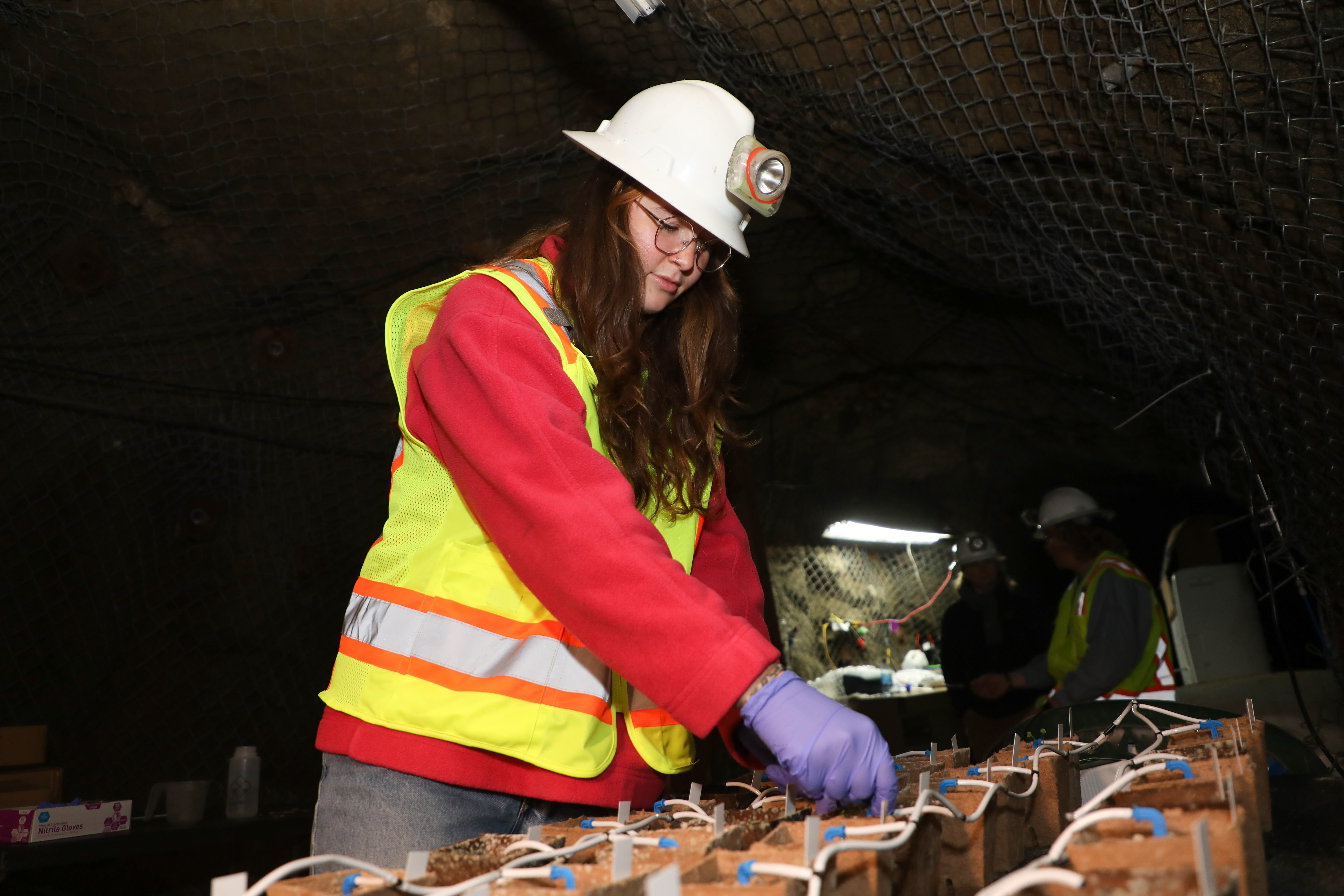Going green Underground

Butte, Montana’s harsh climate, with its extended sub-freezing winters and brief 70-day growing season, presents significant challenges for plant propagation. To overcome this hurdle for crucial campus research, Environmental Engineering students, in collaboration with the Center for Environmental Remediation and Assessment (CERA), are revitalizing and expanding the Underground Mine Education Center (UMEC)’s grow space, enabling year-round plant growth.

Halle Cogley, an Environmental Engineering senior from Idaho, Johannes Chandler, an Environmental Engineering graduate student from Absarokee, and Gavin Rahl, an Environmental Engineering graduate student from Stevensville, recently revived Mining Professor Paul Conrad’s dormant underground greenhouse.CERA Director Dr. Robin Bullock praised the students’ extensive efforts.
“They’ve done a huge amount of work by expanding the space, installing new instrumentation, updating the grow systems, and preparing the space for multiple research projects.”
The new experiment space provides more than 1,200 square feet to work in, far more than was previously available. Because the mine remains a constant temperature year-round, it has greatly reduced the need for heating.
“When it was -20 outside, it was around 60 degrees underground,” Rahl said.
The students who completed the overhaul of the underground greenhouse are all conducting experiments in the space. Cogley is completing a capstone project for the Ecological Restoration certificate.
“I’m conducting phyto-mining research,” Cogley said. “I’m looking at native plants, from around Butte, that may have the ability to hyperaccumulate metals from tailings or mine waste soil into their plant tissues—their stems, leaves, and roots—and eventually determine if we might extract and recover those metals from the plants.”
Chandler is also focusing on phyto-mining potential of plants, and is centering his research around willows.
“I’m looking at the metal uptake of willows,” Chandler said. “It’s a common restoration species, usually used in riparian environments, including stream bank and river restoration. I want to see what the actual accumulation is in those plants based on exposure to water and soil with enriched heavy metals.”
Bullock highlighted the multifaceted potential benefits of phytomining.
“Phyto-mining is primarily under evaluation in Indonesia and Malaysia,” Bullock said. “We’re investigating its potential application in the U.S. under a sponsored project with Newmont Corporation. Specifically, we’re looking at elevated metals concentration waters and soils/mine waste from local mines. These are areas that don’t have enough grade ore for traditional mining, but they still have the potential to pose risks to human health and the environment. We want to see if phyto-mining can be used for extraction in these areas. This could generate revenue from metals recovery while offsetting long-term risk to human health and the environment.”
Rahl’s project has a slightly different focus. “My project looks at using waste wood as a potential biochar for the purpose of an agricultural amendment,” Rahl said.
Waste wood consists of beetle kill, deadfall, or other timber that is not viable for logging companies. The materials increase wildfire risk as they lie scattered on the forest floor. Biochar resembles charcoal, and is the substance left over after biomass has been burned. Biochar can be used to sequester carbon dioxide from the atmosphere.
“Instead of burning large slash piles, which release significant carbon dioxide and impact air quality, I’m exploring how to transform waste wood into a valuable resource for Montana’s agricultural industries,” Rahl said.
Rahl’s underground set-up assesses the feasibility of biochar’s physical characteristics, including its water retention capacity and the impact of varying biochar amounts on plant growth in a controlled environment.
Rahl is collaborating with agricultural producers to do larger scale testing in the field over the summer to see how the biochar interacts with different soil types, which vary widely throughout the State.
“The U.S. Forest Service is sponsoring this project,” Bullock said. “They’re very interested in what can be done with these hazardous fuels in the forest and seeing if they can provide that value to the agricultural community in Montana and elsewhere.”
All three projects underway in the underground greenhouse are important to the students, but they say creating a usable space for future students to conduct research is just as meaningful.
“We want this to be a resource for students long after we graduate,”
Chandler said.